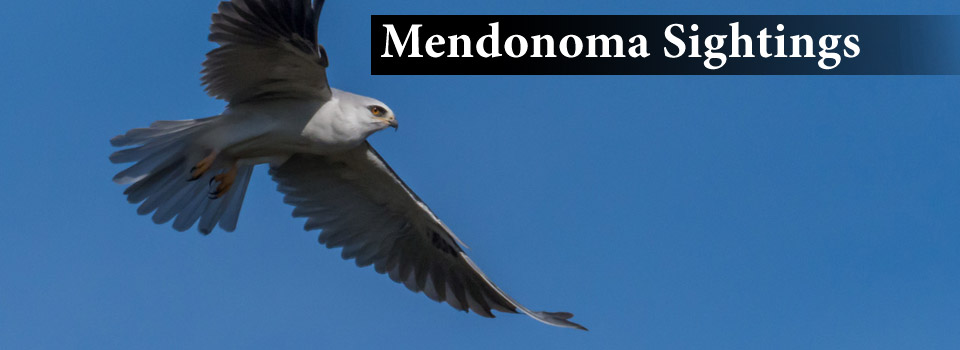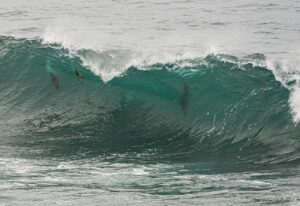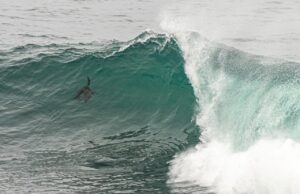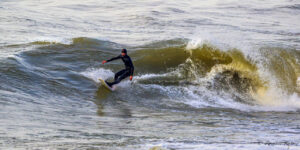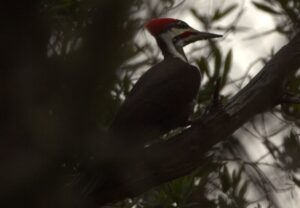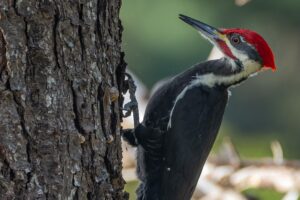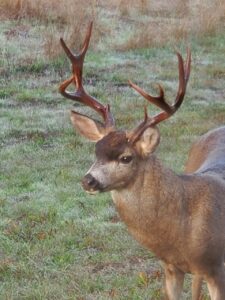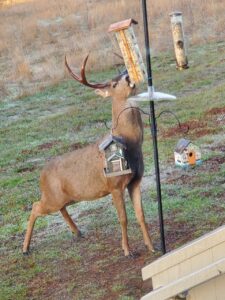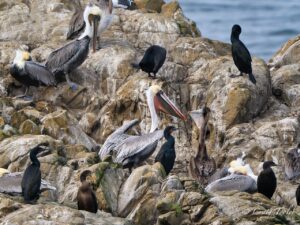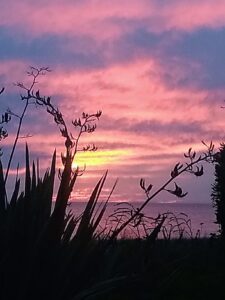Bill Oxford was photographing Sea Lions off Biehler Point on The Sea Ranch this past week. There was a group of Sea Lions rafting together nearby. Several peeled off and decided to surf the big waves. The first photo show three Sea Lions. I can almost hear their glee!
Another of Bill's great photos of this event will be in tomorrow's Independent Coast Observer in my Mendonoma Sightings column.What? You don't get the paper? You can sign up at http://www.mendonoma.com
Were Sea Lions the first surfers? Could be! But there are other creatures who love to surf, including Bottlenose Dolphins and Western Gulls. And then there are the two-legged variety. Rozanne Rapozo photographed this surfer off the mouth of the Gualala River, not a place we usually see surfers!
Thanks to Bill and Rozanne for allowing me to share their photos with you here. You can see more of Bill's photography, which includes weddings, at his website: https://www.billoxford.com/
Today, 1/31/24 Wednesday, the Mendonoma Coast...and much of California...has been hit by a whopper of a storm. Rain totals vary greatly depending on location. As I type this, Rick's and my gauge is at 3.14 inches and it's still raining. I've had reports of over six inches on the Gualala Ridge. It's a gully washer!
